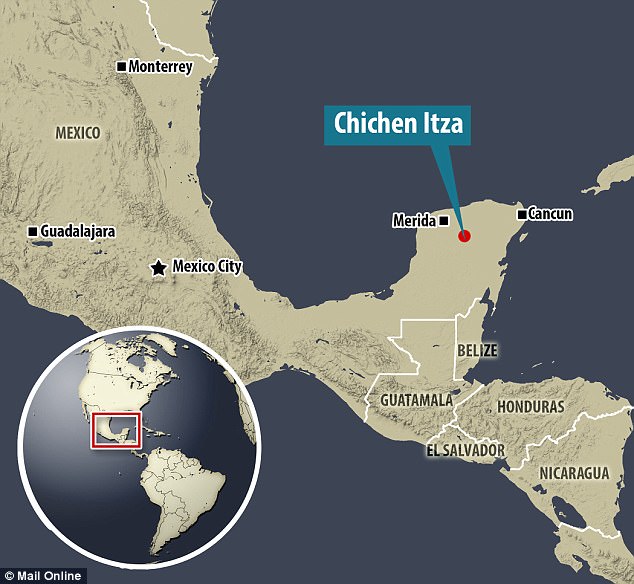[ad_1]
An ancient Mayan city has been discovered deep in the jungles of Mexico.
Buildings, stone columns and 50-foot high pyramids make up the settlement, which was thought to have been a major hub at points between 250 and 1000 AD and is located in a largely unexplored stretch of jungle larger the size of Arizona.
The city – named Ocomtún or ‘stone column’ – covers around a fifth of a square mile and is located in the Campeche region of the Yucatan Peninsula, which splits the Gulf of Mexico and the Caribbean Sea.
It was discovered in May by Slovenian archaeologist Ivan Šprajc, who led a team of into the thick jungle and spent a month uncovering the city’s remains, Mexico’s National Institute for Anthropology and History (INAH) announced on Tuesday.
According to Šprajc, the columns would have served as entrances to the upper floors of the buildings. The city is built around three main plazas, also features courts on which the Mayan inhabitants would have played an ancient ball game.
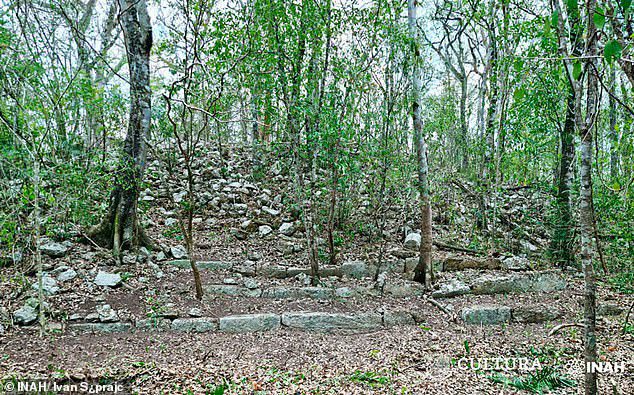
Buildings, stone columns and 50-foot high pyramids make up the recently discovered city of Ocomtún in the in the Campeche region of the Yucatan Peninsula. Pictured is the site
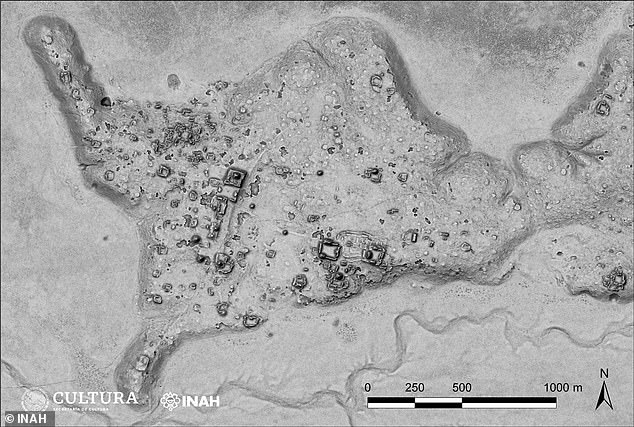
A LiDAR image reveals from above the outline of the newly discovered city, called by archeologists Ocomtún, which means ‘stone column’
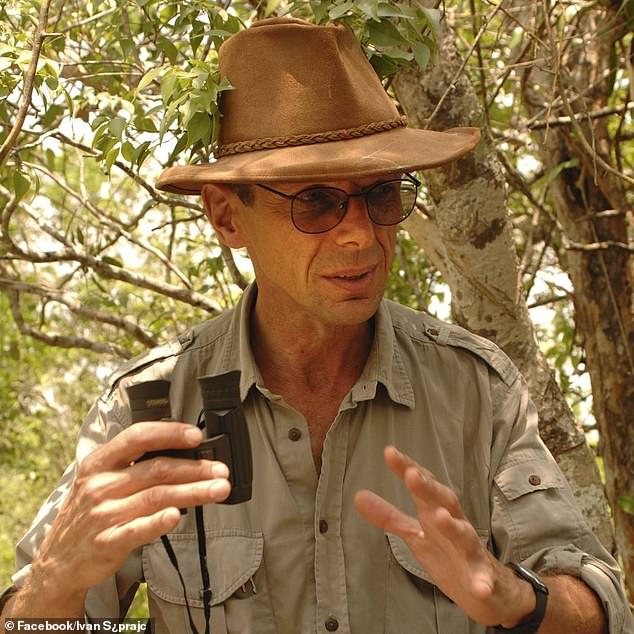
The city was discovered in May by Slovenian archaeologist Ivan Šprajc (pictured) who led a number of archeologists into the dense jungle
Ocomtún was discovered using LiDAR scanners, described by the National Geographic as one of archaeology’s most exciting modern tools, which use laser imaging captured from an aircraft to identify objects and structures hidden below.
The method has become especially popular among archaeologists searching dense regions of forest and jungle.
The Maya civilization, known for its advanced mathematical calendars, spanned southeast Mexico and parts of Central America. They are also renowned for their pyramid temples and stone buildings.
Although they are thought to have been around for millennia, from around 1800 BC through to around 1000 AD, archeologists believe the Ocomtún fell late during the civilization between 800 to 1000 AD.
Political collapse led to its decline centuries before the arrival of Spanish conquistadors, whose military campaigns saw the last stronghold fall in the late 17th century.
The Ocomtún site has a core area, located on high ground surrounded by extensive wetlands, Šprajc said in a statement.
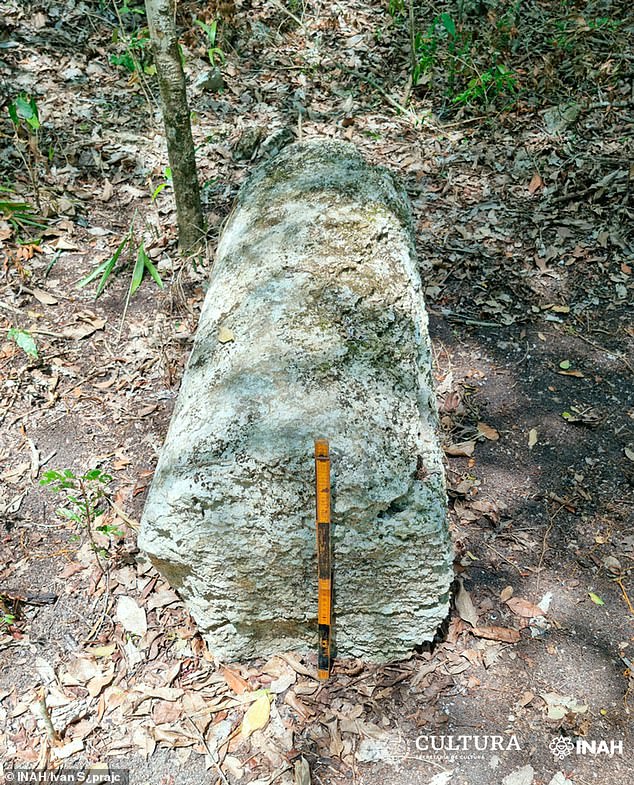
One of the many columns after which the city was name is pictured lying flat
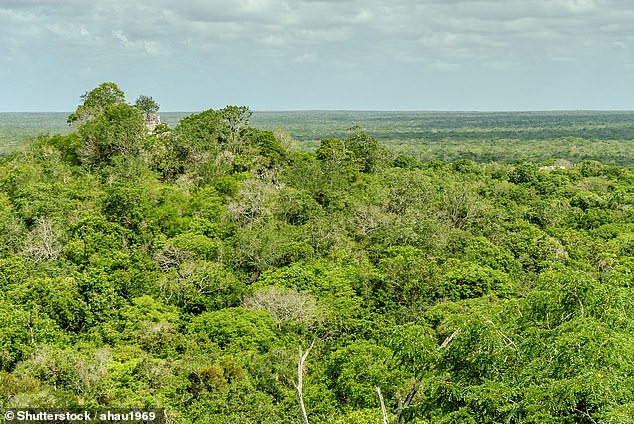
The city was discovered in a largely unexplored stretch of jungle larger the size of Arizona. Pictured is the Calakmul Biosphere Reserve
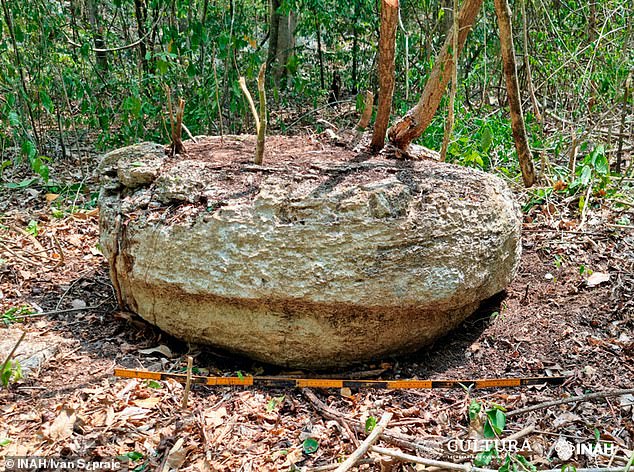
An object on the site of the ancient city said by the Mexican National Institute for Anthropology and History to be an alter

Pictured is a stone uncovered as part the effort led by Šprajc
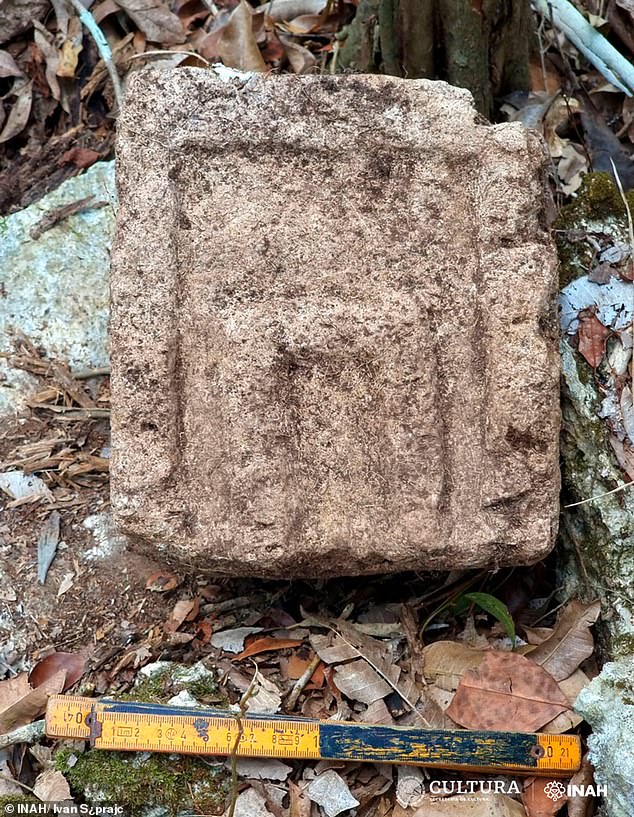
A façade element incorporated into some of the ancient Mayan structures discovered last month
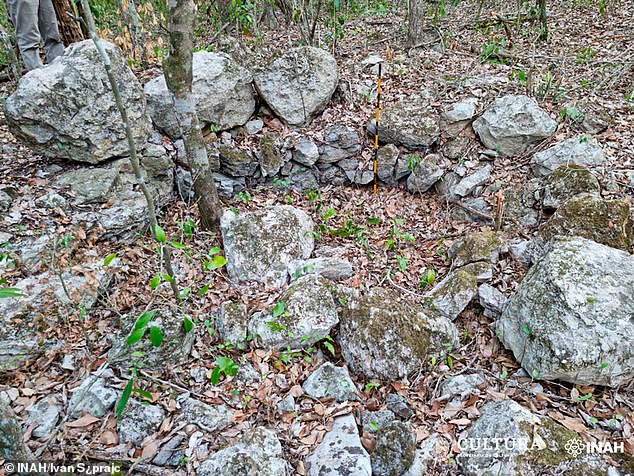
A series of stones were among what remained of the city, which is thought to have fallen at around the time the broader Mayan civilization collapsed
Ball games were popular throughout the Maya region and consisted of passing a rubber ball across a court without the use of hands and getting it through a small stone hoop.
The ball game is thought by experts to have been played throughout the Mesoamerican region and is probably the oldest game in the history of sports. It is played on a stone-floored court about 160 feet in length.
Šprajc said his team had also found central altars in an area closer to the La Riguena river, which may have been designed for community rituals, though more research is needed to understand the cultures that once lived there.
He has uncovered a number of Mayan cities during his career, which has been dedicated to the Yucatan Peninsula, and is the author of Lost Maya Cities: Archaeological Quests in the Mexican Jungle.
He suggested in his latest announcement that collapse of the city was likely a reflection of ‘ideological and population changes’ that led to the broader collapse of Maya societies in that region by around the 10th century.
Earlier this year a similar LiDAR approach was used to identify another Mayan civilization in Guatemala.
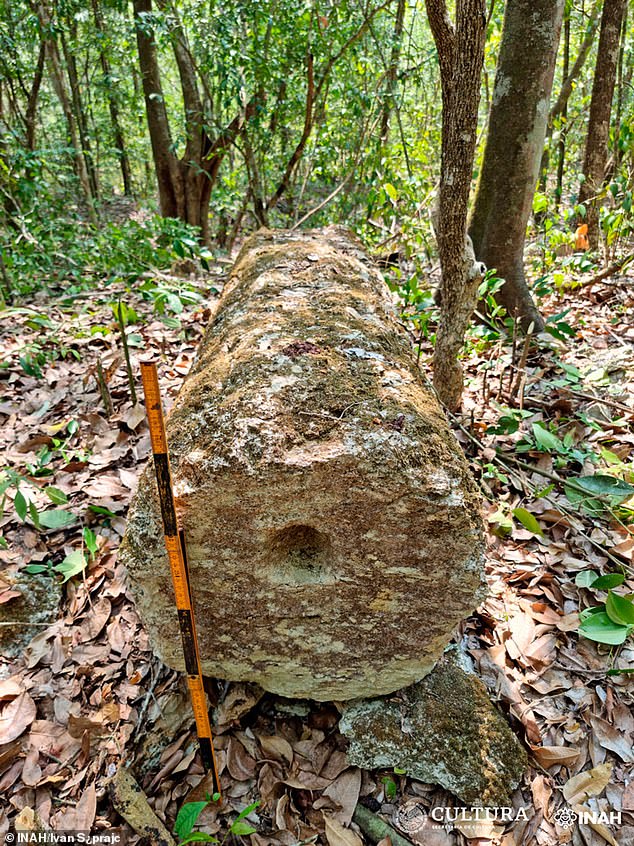
One of the columns that stood upright to mark the entrance to the upper levels of some of the buildings lies flat
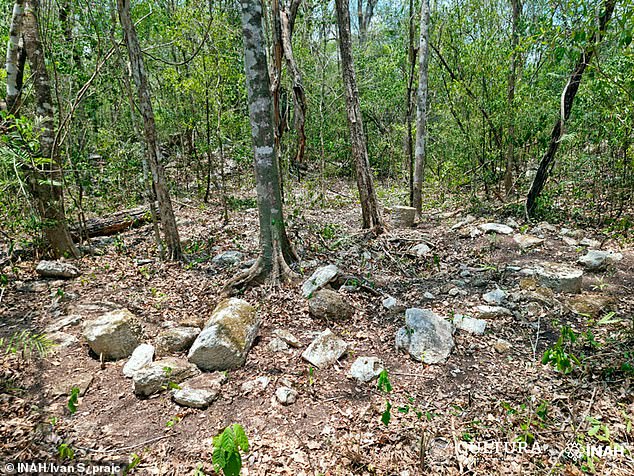
Pictured is a Mayan shrine within the
[ad_2]



